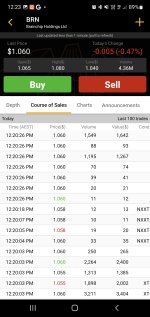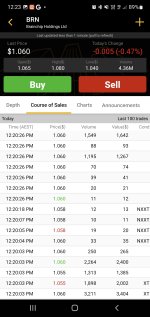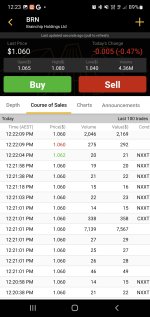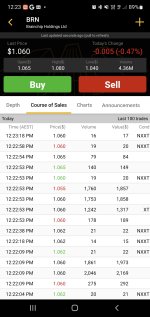I just swiped this from Killick & Co's LinkedIn page and it's a fascinating read. Seeing Machines are their largest holdings. Bear in mind that NVISO and Seeing Machines have previously worked together. I'm still a bit confused about what their relationship is and whether or not they're a custoner of NVISO? Anyhooo, there is so much to pick through here, it's a veritable smorgasbord of information, but some of the big take-aways for me are that:
- Driver Monitoring Systems are now an immediate term issue for OEMs as they are being squeezed between the time it takes to design in such technology (c.18 months) and the regulatory timetables for implementation (from 2022-2024)
- These automated driving features have proven very popular however consumers have obviously expressed privacy concerns surrounding DMS (which needless to say would not be an issue with AKIDA)
- It is anticipated that from 2023 cars will need to have a DMS in order to achieve the coveted 5* rating
- Mercedes Benz is a partner of Seeing Machines (but is also a partner to BrainCHip)
- We need to team up with Seeing Machines or rather, they need our IP IMO, if they are to " secure 50% of the overall market (i.e. 15m. cars per annum across Europe and the US"
LinkedIn
Seeing Machines (11.0p) - our largest holding but also the one with the highest conviction too….
Michael Savage
Michael Savage
Partner, Head of Special Situations at Killik & Co
Published Aug 12, 2021
Following the share price spike over the last week, Seeing Machines is once again the largest holding across client portfolios in the Killik Special Situations service; although we may have the same number of company holdings as in a unitised fund (we currently have c.60), one major advantage of having a segregated discretionary service mandate is that we can finesse the timing of stock purchases for individual clients on the basis that not all of our 60 names are “screaming buys” all the time, a feature that is implicit in a unitised fund manager’s likely investment of new monies in one fell swoop. Interestingly, our highest conviction buy just now (Seeing Machines) is also the largest holding in our service; these two variables don’t necessarily align! We have been invested in the company since 2017 and helped finance the company through several funding rounds. Despite having issues in parts of the business unrelated to the key area of our interest (the automotive OEM Division), then delays to RFQs in the wake of the pandemic, we believe the company really is now at an inflection point. I have asked my outstanding wingman, Peter Bate, to summarise the investment case as below.
Background
Seeing Machines recently released its FY21 trading update for the year ended 30 June 2021. Whilst the statement was relatively brief, we believe it is one of the most significant statements its management has made in some time – with the key feature being the marked increase in the number of Tier-1 relationships (key suppliers to the automotive OEMs and therefore crucial industry gatekeepers) and the quantification of the significant increase in the current RFQ pipeline (to A$900m+). To us this confirms that DMS is now an immediate term issue for OEMs as they are being squeezed between the time it takes to design in such technology (c.18 months) and the regulatory timetables for implementation (from 2022-2024).
As a reminder, Seeing Machines is a provider of semiconductor IP used in automotive safety applications. In a nutshell, the company has taken 20 years of research and 7bn km+ worth of video footage of the human face when driving. They have then trained an AI system using this data so that the system knows what it looks like just before someone falls asleep, or for example, is looking at their mobile phone rather than driving. This technology has been packaged into what is known as a Driver Monitoring System (DMS) and is currently deployed by Seeing Machines into both fleet customers (in an aftermarket capacity) as well as into passenger car applications, where it has been installed on more than 100,000 passenger cars to date. Seeing Machines is one of two key vendors of DMS systems, the other one being Smart Eye (based in Sweden). We believe the DMS industry will effectively remain as a duopoly for the aforementioned reasons of time to deploy the technology and impending regulatory deadlines i.e. there is simply not time for a new scale player to enter the market and become appropriately qualified.
The key drivers to adoption here are legislative: from 2022, all cars with certain autonomous driving capabilities sold in the EU must have an integrated driver monitoring system (or from 2024 for all new models). The reasons behind this are quite obvious - the car needs to know that the driver is paying attention on the road ahead and it is safe to hand back control to the driver when the automated driving features are deactivated or the road becomes inappropriate for the autonomous driving. These automated driving features have proven very popular with consumers and we believe more than offset earlier (but unwarranted we believe) privacy concerns surrounding DMS. Similar legislation in the US targeting a 2024 implementation date was recently passed in the House of Representatives, but has yet to pass the Senate. In recent days however we have seen key provisions within the US Infrastructure Bill that seek to improve automotive safety – with a specific focus on using technology to detect drunk and distracted drivers – DMS is the obvious enabling tool we believe. Beyond the legal “stick”, we expect the consumer demand “carrot” to come from Euro NCAP, the care safety standard body that is closely followed by consumers. It is anticipated that from 2023 cars will need to have a DMS in order to achieve the coveted 5* rating.
Seeing Machines currently has five production vehicles across three OEMs, which is expected to grow to 30 separate models across the next two calendar years. Behind this, the company has its c. A$900m RFQ pipeline, supporting the longer-term roadmap and providing scope for shorter term contract win announcements. The company will not confirm its customers (apart from GM & Mercedes-Benz); however, we believe the other OEMs include BMW, Fiat Chrysler and Ford. We believe that the current production vehicles include the Cadillac Escalade, Cadillac CT5, Ford Mustang Mach-E, Ford F150 pickup truck, the Mercedes Benz S Class and Mercedes Benz EQS. Aside from the revenue growth that will come as these first material OEMs come on stream, it is important to note that the margin profile of this division will transform from non-recurring engineering revenue towards high margin royalty revenue.
As a loss-making semiconductor IP business whose product sales are immature (but the technology is definitely not), the company is not easy to value. The bulk of revenue at the group is currently generated from its Aftermarket Division which, as it sounds, provides aftermarket DMS boxes into commercial fleet vehicles (approaching 32,000 vehicles). Whilst this division may not have the inherent scalability of the OEM side, it is now profitable as a standalone unit, with revenues this year of c.A$38m, a significant proportion of which is recurring. Crucially, this division also generates significant volumes of data that feeds the AI to offer continuous improvement to the groups algorithms – and as such offers significant differentiation over peers. This is the data that has built the company and has significant strategic value to the industry. The c.7bn+ kilometres of captured driver reactions (what ultimately trains the AI) being effectively impossible for anyone else to synthesise over the three years before the significant ramp up in regulatory requirements for DMS.
In valuing the Automotive Division, we must consider the earnings power of this division when DMS hits the mainstream, which we assume will be in or just before 2024 (when key EU and hopefully US regulations kick in). Given our assumption that the Seeing Machines is able to secure 50% of the overall market (i.e. 15m. cars per annum across Europe and the US), this could imply just over £100m. in high margin royalty revenue potential. Although the company is still loss -making, it has a strong balance sheet, with A$47.7m of net cash as at 30 June 2021. We believe it is on target to be cash flow neutral in FY23, and accordingly, think it is now fully funded through to profitability.
We believe the key share price catalysts from here will include the conversion of the aforementioned RFQ pipeline into new OEM wins; we would particularly look out for any of the Japanese OEMs as the group has yet to make headway in the region (we believe) yet, as well as any progress with the Volkswagen Group. Another angle could be M&A activity. Recent times have seen consolidation in adjacent parts of the industry – with peer Smart Eye taking over Affectiva (AI designed to interpret human emotions) in May 2021 for $73.5m (there are no earnings/revenue metrics available for Affectiva). In the last few days we have also seen a bidding war commence for automotive technology company (and Seeing Machines integrator) Veoneer, a Tier-1 integration partner to Seeing Machines. In July, Veoneer (NYSE-listed) was initially in receipt of a takeover bid from Magna (another Tier-1 which we also believe works with Seeing Machines) for $4.6bn. Subsequently, on 5th August, Qualcomm (the largest fabless semiconductor manufacturer in the world and also a Seeing Machines partner) announced a counter-offer for Veoneer, at an 18% premium to the Magna offer.
Veoneer and Qualcomm have an existing partnership. Indeed Veoneer software was one of the three pre-selected software stacks chosen by Qualcomm as part of its new Snapdragon Ride SoC announced in January 2021. Intriguingly, Seeing Machines’ DMS was one of the other three pre-selected software stacks (the final being a parking automation product from Valeo). We believe the takeover of Seeing Machines by Qualcomm would ultimately be highly logical, capturing for the latter high value IP based upon large datasets that cannot be synthesised quickly – just as the technology has proven to be mainstream and its adoption is growing.
Following the share price spike over the last week, Seeing Machines is once again the largest holding across client portfolios in the Killik Special Situations service; although we may have the same number of company holdings as in a unitised fund (we currently have c.60), one major advantage of hav

www.linkedin.com









